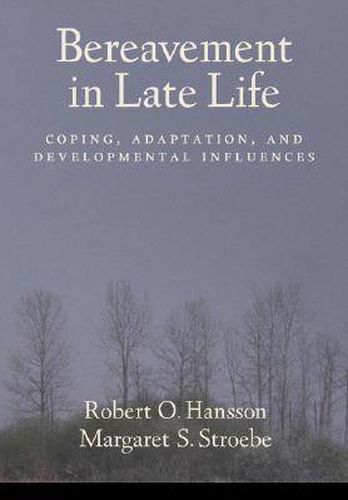Readings Newsletter
Become a Readings Member to make your shopping experience even easier.
Sign in or sign up for free!
You’re not far away from qualifying for FREE standard shipping within Australia
You’ve qualified for FREE standard shipping within Australia
The cart is loading…






Late life is a time when loss becomes more frequent. Grief experiences accumulate as many older people grapple with diminishing adaptive reserves, changes in cognitive and emotional functioning, patterns of social integration, loneliness, and financial risk. In these years, bereavement poses an array of difficult issues for coping, assessment, and intervention. In what is certain to become a landmark volume, Hansson and Stroebe present a critical review of the literature and dominant theories in the field of bereavement and examine how protective and problematic developmental processes affect the experience of bereavement in late life. They argue for a new, more fine-grained understanding of how the processes of aging and bereavement interact to influence life outcomes, adaptive potential, coping capacity, and successful aging. Finally, in a series of specific proposals, the authors present a path for future research on the bereavement experiences of older adults.
$9.00 standard shipping within Australia
FREE standard shipping within Australia for orders over $100.00
Express & International shipping calculated at checkout
Late life is a time when loss becomes more frequent. Grief experiences accumulate as many older people grapple with diminishing adaptive reserves, changes in cognitive and emotional functioning, patterns of social integration, loneliness, and financial risk. In these years, bereavement poses an array of difficult issues for coping, assessment, and intervention. In what is certain to become a landmark volume, Hansson and Stroebe present a critical review of the literature and dominant theories in the field of bereavement and examine how protective and problematic developmental processes affect the experience of bereavement in late life. They argue for a new, more fine-grained understanding of how the processes of aging and bereavement interact to influence life outcomes, adaptive potential, coping capacity, and successful aging. Finally, in a series of specific proposals, the authors present a path for future research on the bereavement experiences of older adults.